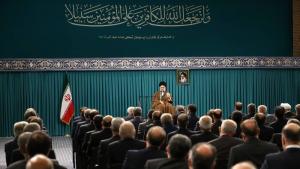On March 20, 2024, the Iranian regime’s supreme leader, Ali Khamenei, delivered his Nowruz speech. Despite Khamenei’s attempts to twist the truth, his message showcased Iran’s financial calamity due to the regime’s corruption and wrong policies.
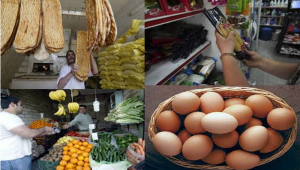
Khamenei increased poverty .“The cost of fruits and vegetables has risen by 100-200% over the past two years, while the prices of white and red meat have surged more than fourfold compared to summer 2021,” reported the state-run Setareh Sobh Daily in 2023.
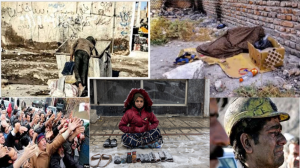
Khamenei emphasized, ” That we expect to see a surge in production this year, and of course, this wouldn’t happen without people’s participation.” He further suggested that the regime should “popularize the economy and increase people’s participation.”
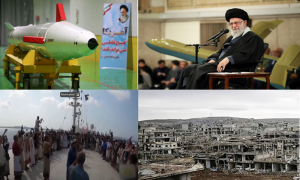
Seeing his regime’s downfall on the horizon, Khamenei embarked on a dangerous gamble following the October 7 attack, to oppress Iran’s restive society and the “head of the snake” needs every penny to fund and fuel its terrorist proxies and chaos across the region.
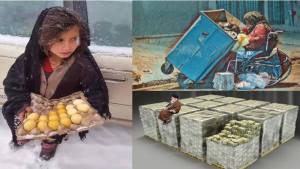
In April 2019, the Daily Sabbah quoted US officials as estimating Khamenei’s wealth at around $200 billion.The true extent of his wealth remains one of the state’s most guarded secrets.He knows about corruption and power struggles inside his regime.
As Reuters revealed in 2013, “Khamenei controls $90 billion financial empire accumulated through usurping people’s wealth. Yet, he only offers recommendations.”
— NCRI
PARIS, FRANCE, March 26, 2024 /EINPresswire.com/ — The National Council of Resistance of Iran (NCRI) Foreign Affairs Committee in an article published that on March 20, 2024, the Iranian regime’s supreme leader, Ali Khamenei, delivered his Nowruz speech. Despite Khamenei’s attempts to twist the truth, his message showcased Iran’s financial calamity due to the regime’s corruption and wrong policies.
“The country’s fundamental weak point is the economy,” Khamenei said, acknowledging the country’s economic crunch. Yet, he contradicted himself by claiming that “Regarding last year’s slogan, ‘controlling inflation and increasing production’ many good actions were taken. Of course, it was not enough.”
Khamenei emphasized the importance of production, stating, “The issue of production is very important. Thus, I emphasize it and expect to see a surge in production this year, and of course, this wouldn’t happen without people’s participation.” He further suggested that the regime should “popularize the economy and increase people’s participation.”
Khamenei’s speech echoed with rhetoric but lacked substance. As Reuters revealed in 2013, Khamenei controls a vast $90 billion financial empire, accumulated through usurping people’s wealth. Yet, he only offers recommendations.
In April 2019, the Daily Sabbah quoted US officials as estimating his wealth at around $200 billion. The true extent of his wealth remains one of the state’s most guarded secrets, likely surpassing current estimates.
Besides, Khamenei cloaks his true intention of entrusting the remaining facets of Iran’s economy and the country’s income streams to the Revolutionary Guards (IRGC), under the guise of “popularizing the economy.” Attempts to genuinely popularize Iran’s economy are indeed unattainable, as the country’s resources are monopolized and plundered by the IRGC and Khamenei’s affiliated financial institutions.
For years, Khamenei allowed his goons to devastate Iran’s economy under the pretext of the “private sector.” The terms “private sector” or providing economic opportunities to “people” are euphemisms wielded by Khamenei to signify the Revolutionary Guards (IRGC) and its economic powerhouses, in addition to the paramount conglomerate of the regime’s Supreme Leader. Any business aspiring to wield significant economic influence in Iran must establish connections with the IRGC.
In 2020, amidst the growth and eventual burst of the Stock Market bubble, Ali Khamenei backed his president Hassan Rouhani’s plan, encouraging investment in domestic goods and productive ventures like cooperatives and stock exchanges.
Despite warnings from regime economists of an imminent burst, fueled by Rouhani’s government’s methods, some individuals heavily invested, causing the stock market index to soar to 2 million points by July 2020. Yet the bubble growth rapidly burst, leaving many Iranian investors destitute, while allowing Rouhani’s government to compensate for its budget deficit and the IRGC to sell shares of imaginary enterprises.
So, when Khamenei speaks of “economic opportunities” and “popularizing the economy,” he implies further plundering and increased poverty for Iranians.
“The cost of fruits and vegetables has risen by 100-200% over the past two years, while the prices of white and red meat have surged more than fourfold compared to summer 2021,” reported the state-run Setareh Sobh Daily on March 11, 2023.
Recent reports indicate that red meat prices have surged by 82% compared to the previous year, reflecting the ongoing challenges faced by Iranian consumers. The inflation rate for a basket of essential daily needs is nearly 40%, while overall inflation for retail food prices continued to stand north of 50% throughout the year.
Despite increased oil exports and circumventing sanctions, the Iranian regime failed to curb inflation. The national currency, the rial, remains weak against the US dollar, hovering around its all-time low. This economic pressure has led to protests and unrest, highlighting the profound impact of high prices on the daily lives of Iranians.
Seeing his regime’s downfall on the horizon, Khamenei embarked on a dangerous gamble following the October 7 attack, using the global focus on regional disputes to oppress Iran’s restive society. However, changing times and tides have turned against Khamenei, and the “head of the snake” needs every penny to fund and fuel its terrorist proxies and chaos across the region.
Iran’s economic downturn does not have a financial solution, as the problem stems from the regime.
During Mahmoud Ahmadinejad’s presidency, the regime had ample time and prime opportunity to tackle Iran’s economic woes, amassing approximately $900 billion from oil revenues. However, instead of investing in the nation’s prosperity, the bulk of these funds were wasted on supporting terrorism, developing weapons of mass destruction, and importing goods, consequently exacerbating unemployment, liquidity, and inflation, and hampering national production.
Ali Khamenei, clearly demonstrated the concerns and priorities of his regime’s path in his Nowruz remarks on March 20. In this speech, primarily addressing forces affiliated with his regime, Khamenei used the word “hope” 29 times and emphasized greatly urging his state officials towards “creating hope” and preventing frustration.
“Today, our national interests and a bright future depend on hope and faith, about which I have had a detailed discussion before the year 1402 (March 2023- March 2024),” Khamenei said. “I want to emphasize this: hope and faith. If the dawn of hope fades in hearts, there will be no way forward.”
Claiming his regime has witnessed progress in the past year, Khamenei added, “These advancements are possible when you and I are hopeful about the future; when we have hope; when we know progress can be made, work can be done, and action can be taken.”
“Some individuals, in my opinion, engage in pessimistic language; they deny the existence of hope in the youth, and they try to eradicate hope from hearts!… It’s as if they’ve set traps to extinguish the spirit of hope in the youth and make them perish,” he further stated.
Seven years of provincial and nationwide uprisings have made it clear that Khamenei’s rhetoric is not resonating with the Iranian populace. The recent sham elections on March 1st served as a stark example, as the decisive boycott by the people showcased their absolute rejection of any internal reform, and laid bare the regime’s illegitimacy.
Considering the Iranian regime’s use of reverse language, it is evident that words such as “hope” and “youth” carry deeper implications within Khamenei’s mindset. In light of this, a significant morale crisis exists among the forces purportedly loyal to Khamenei, who are entrusted with the task of suppressing the Iranian populace to maintain his reign.
Khamenei’s strategy involved orchestrating a theatrical election aimed at purging elements close to power, consolidating his authority, and addressing the issue of succession through a meticulously vetted Assembly of Experts. However, this “surgery,” while intended to bolster his control, has resulted in considerable backlash.
State officials and media figures, sidelined from positions of influence, have intensified their efforts to expose corruption within the regime. Subsequently, they are inadvertently undermining Khamenei’s loyalists and undermining those he has deemed “eligible to govern according to Islamic rule.”
Following the elections, Khamenei was compelled to take a stance, remarking, “There are those who seek to sour the sweetness of elections for the people.” In recent years, while attempting to consolidate power in his regime by marginalizing former accomplices, Khamenei has grown increasingly frustrated over the ramifications of power struggles inside his regime.
He knows that revelations and exposure of the regime’s corruption breed dissatisfaction and perceives these developments as fostering despair among forces aligned with him.
Furthermore, Khamenei’s Middle East stratagem initially aimed to rally domestic factions against an external threat by fostering a climate of warmongering in the region, ultimately seeking to consolidate their obedience under his hegemony.
However, as global awareness grows regarding Tehran’s involvement in regional conflicts, Khamenei is beginning to grasp that his objectives have not been met. Not only has he failed to achieve a strategic victory, but also authorities who once vocally supported his proxy forces are now expressing skepticism about Khamenei’s roadmap for the region.
Khamenei perceives the questioning and undermining of his strategy in the region as detrimental to the morale of his oppressive forces, and he warns against such actions.
To subscribe weekly Newsletter of NCRI, please use this link. https://bit.ly/3SMgEla
Shahin Gobadi
NCRI
+33 6 61 65 32 31
email us here
Khamenei allowed to devastate Iran’s economy under the name of the “private sector.” The terms “private sector” or providing economic opportunities to “people”.
![]()
Article originally published on www.einpresswire.com as Khamenei’s Concerns Reflected in His Nowruz Speech
